
A firewall is a part of a computer system or network that is designed to block unauthorized access while permitting authorized communications. It is a device or set of devices configured to permit, deny, encrypt, decrypt, or proxy all (in and out) computer traffic between different security domains based upon a set of rules and other criteria.
Firewalls can be implemented in either hardware or software, or a combination of both. Firewalls are frequently used to prevent unauthorized Internet users from accessing private networks connected to the Internet, especially intranets. All messages entering or leaving the intranet pass through the firewall, which examines each message and blocks those that do not meet the specified security criteria.
There are several types of firewall techniques:
1. Packet filter: Packet filtering inspects each packet passing through the network and accepts or rejects it based on user-defined rules. Although difficult to configure, it is fairly effective and mostly transparent to its users. In addition, it is susceptible to IP spoofing.
2. Application gateway: Applies security mechanisms to specific applications, such as FTP and Telnet servers. This is very effective, but can impose a performance degradation.
3. Circuit-level gateway: Applies security mechanisms when a TCP or UDP connection is established. Once the connection has been made, packets can flow between the hosts without further checking.
4. Proxy server: Intercepts all messages entering and leaving the network. The proxy server effectively hides the true network addresses.
Function
A firewall is a dedicated appliance, or software running on a computer, which inspects network traffic passing through it, and denies or permits passage based on a set of rules.
It is a software or hardware that is normally placed between a protected network and an unprotected network and acts like a gate to protect assets to ensure that nothing private goes out and nothing malicious comes in.
A firewall's basic task is to regulate some of the flow of traffic between computer networks of different trust levels. Typical examples are the Internet which is a zone with no trust and an internal network which is a zone of higher trust. A zone with an intermediate trust level, situated between the Internet and a trusted internal network, is often referred to as a "perimeter network" or Demilitarized zone (DMZ).
A firewall's function within a network is similar to physical firewalls with fire doors in building construction. In the former case, it is used to prevent network intrusion to the private network. In the latter case, it is intended to contain and delay structural fire from spreading to adjacent structures.
Without proper configuration, a firewall can often become worthless. Standard security practices dictate a "default-deny" firewall ruleset, in which the only network connections which are allowed are the ones that have been explicitly allowed. Unfortunately, such a configuration requires detailed understanding of the network applications and endpoints required for the organization's day-to-day operation. Many businesses lack such understanding, and therefore implement a "default-allow" ruleset, in which all traffic is allowed unless it has been specifically blocked. This configuration makes inadvertent network connections and system compromise much more likely.
First generation - packet filters
The first paper published on firewall technology was in 1988, when engineers from Digital Equipment Corporation (DEC) developed filter systems known as packet filter firewalls. This fairly basic system was the first generation of what would become a highly evolved and technical internet security feature. At AT&T Bell Labs, Bill Cheswick and Steve Bellovin were continuing their research in packet filtering and developed a working model for their own company based upon their original first generation architecture.
Packet filters act by inspecting the "packets" which represent the basic unit of data transfer between computers on the Internet. If a packet matches the packet filter's set of rules, the packet filter will drop (silently discard) the packet, or reject it (discard it, and send "error responses" to the source).
This type of packet filtering pays no attention to whether a packet is part of an existing stream of traffic (it stores no information on connection "state"). Instead, it filters each packet based only on information contained in the packet itself (most commonly using a combination of the packet's source and destination address, its protocol, and, for TCP and UDP traffic, the port number).
TCP and UDP protocols comprise most communication over the Internet, and because TCP and UDP traffic by convention uses well known ports for particular types of traffic, a "stateless" packet filter can distinguish between, and thus control, those types of traffic (such as web browsing, remote printing, email transmission, file transfer), unless the machines on each side of the packet filter are both using the same non-standard ports.
Second generation - Application layer
The key benefit of application layer filtering is that it can "understand" certain applications and protocols (such as File Transfer Protocol, DNS, or web browsing), and it can detect whether an unwanted protocol is being sneaked through on a non-standard port or whether a protocol is being abused in any harmful way.
Third generation - "stateful" filters
From 1989-1990 three colleagues from AT&T Bell Laboratories, Dave Presetto, Janardan Sharma, and Kshitij Nigam developed the third generation of firewalls, calling them circuit level firewalls.
Third generation firewalls in addition regard placement of each individual packet within the packet series. This technology is generally referred to as a stateful packet inspection as it maintains records of all connections passing through the firewall and is able to determine whether a packet is either the start of a new connection, a part of an existing connection, or is an invalid packet. Though there is still a set of static rules in such a firewall, the state of a connection can in itself be one of the criteria which trigger specific rules.
This type of firewall can help prevent attacks which exploit existing connections, or certain Denial-of-service attacks.
::TYPES::
There are several classifications of firewalls depending on where the communication is taking place, where the communication is intercepted and the state that is being traced.
Network layer and packet filters
Network layer firewalls, also called packet filters, operate at a relatively low level of the TCP/IP protocol stack, not allowing packets to pass through the firewall unless they match the established rule set. The firewall administrator may define the rules; or default rules may apply. The term "packet filter" originated in the context of BSD operating systems.
Network layer firewalls generally fall into two sub-categories, stateful and stateless. Stateful firewalls maintain context about active sessions, and use that "state information" to speed packet processing. Any existing network connection can be described by several properties, including source and destination IP address, UDP or TCP ports, and the current stage of the connection's lifetime (including session initiation, handshaking, data transfer, or completion connection). If a packet does not match an existing connection, it will be evaluated according to the ruleset for new connections. If a packet matches an existing connection based on comparison with the firewall's state table, it will be allowed to pass without further processing.
Stateless firewalls require less memory, and can be faster for simple filters that require less time to filter than to look up a session. They may also be necessary for filtering stateless network protocols that have no concept of a session. However, they cannot make more complex decisions based on what stage communications between hosts have reached.
Modern firewalls can filter traffic based on many packet attributes like source IP address, source port, destination IP address or port, destination service like WWW or FTP. They can filter based on protocols, TTL values, netblock of originator, of the source, and many other attributes.
Commonly used packet filters on various versions of Unix are ipf (various), ipfw (FreeBSD/Mac OS X), pf (OpenBSD, and all other BSDs), iptables/ipchains (Linux).
Application-layer
Application-layer firewalls work on the application level of the TCP/IP stack (i.e., all browser traffic, or all telnet or ftp traffic), and may intercept all packets traveling to or from an application. They block other packets (usually dropping them without acknowledgment to the sender). In principle, application firewalls can prevent all unwanted outside traffic from reaching protected machines.
On inspecting all packets for improper content, firewalls can restrict or prevent outright the spread of networked computer worms and trojans. The additional inspection criteria can add extra latency to the forwarding of packets to their destination.
Proxies
A proxy device (running either on dedicated hardware or as software on a general-purpose machine) may act as a firewall by responding to input packets (connection requests, for example) in the manner of an application, whilst blocking other packets.
Proxies make tampering with an internal system from the external network more difficult and misuse of one internal system would not necessarily cause a security breach exploitable from outside the firewall (as long as the application proxy remains intact and properly configured). Conversely, intruders may hijack a publicly-reachable system and use it as a proxy for their own purposes; the proxy then masquerades as that system to other internal machines. While use of internal address spaces enhances security, crackers may still employ methods such as IP spoofing to attempt to pass packets to a target network.
Network address translation
Firewalls often have network address translation (NAT) functionality, and the hosts protected behind a firewall commonly have addresses in the "private address range", as defined in RFC 1918. Firewalls often have such functionality to hide the true address of protected hosts. Originally, the NAT function was developed to address the limited number of IPv4 routable addresses that could be used or assigned to companies or individuals as well as reduce both the amount and therefore cost of obtaining enough public addresses for every computer in an organization. Hiding the addresses of protected devices has become an increasingly important defense against network reconnaissance.
Thursday, October 22, 2009
LEC 8:: FIREWALL
Posted by SeCuRiTy LiFe.. at 6:19 PM
Subscribe to:
Post Comments (Atom)






 .
. e and
e and  share no divisors other than
share no divisors other than  .
.  , where lcm is the
, where lcm is the  and
and  ,
, .
.

 .
. ,
, .
.



 e.g., by computing the
e.g., by computing the  :
: 


 .
. Because of this multiplicative property a
Because of this multiplicative property a  and so the effect of
and so the effect of 
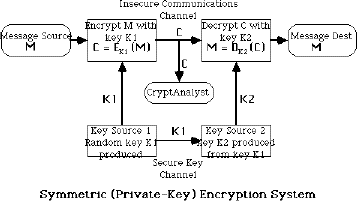
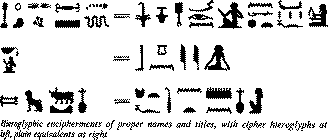

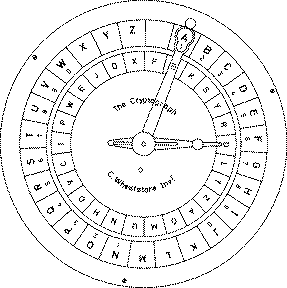
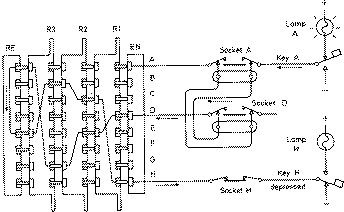
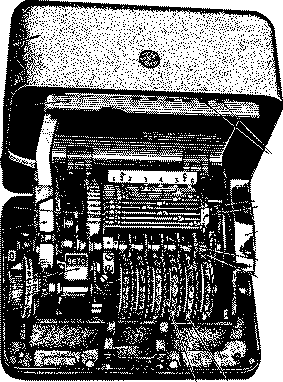
 ie mapping is
ie mapping is 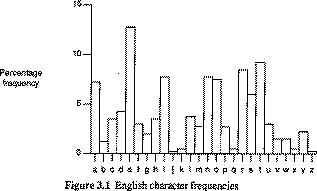
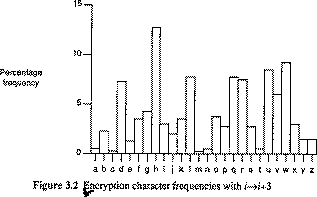


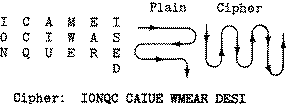

0 comments:
Post a Comment